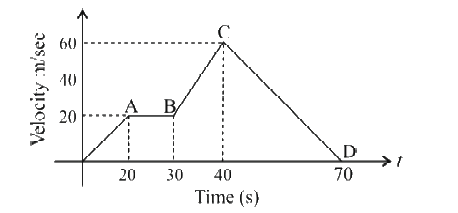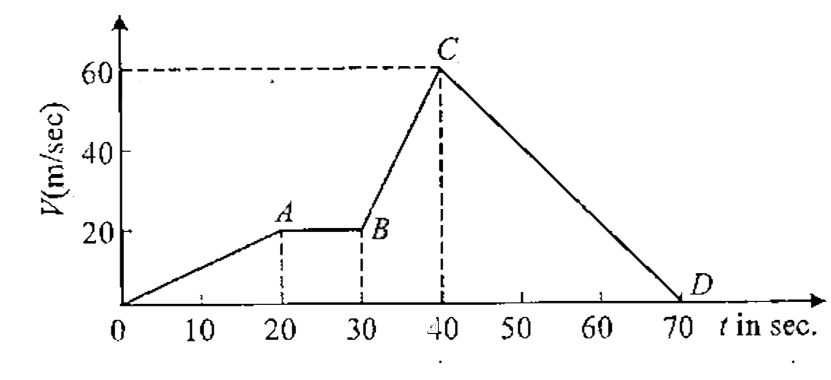An object will continue accelerating until
The resultant force on it begins to decrease
The velocity changes direction
The resultant force on it is zero
the resultant force is at right angles to its direction of motion
The correct Answer is:C
To solve the question "An object will continue accelerating until...", we need to analyze the relationship between force, mass, and acceleration according to Newton's laws of motion.
1. Understanding Acceleration:
- According to Newton's second law of motion, the acceleration a of an object is directly proportional to the net force F acting on it and inversely proportional to its mass m. This can be expressed mathematically as:
F=m⋅a
2. Condition for Acceleration:
- An object will continue to accelerate as long as there is a net force acting on it. If the net force is not zero, the object will experience acceleration.
3. When Does Acceleration Stop?:
- For an object to stop accelerating, the acceleration must become zero. According to the formula, if a=0, then the net force F must also be zero because:
a=Fm⟹F=m⋅0=0
4. Conclusion:
- Therefore, an object will continue accelerating until the resultant (net) force acting on it becomes zero. Once the net force is zero, the acceleration will also be zero, and the object will stop accelerating.
Final Answer:
An object will continue accelerating until the resultant force acting on it is zero.
- According to Newton's second law of motion, the acceleration a of an object is directly proportional to the net force F acting on it and inversely proportional to its mass m. This can be expressed mathematically as:
F=m⋅a
- An object will continue to accelerate as long as there is a net force acting on it. If the net force is not zero, the object will experience acceleration.
- For an object to stop accelerating, the acceleration must become zero. According to the formula, if a=0, then the net force F must also be zero because:
a=Fm⟹F=m⋅0=0
- Therefore, an object will continue accelerating until the resultant (net) force acting on it becomes zero. Once the net force is zero, the acceleration will also be zero, and the object will stop accelerating.
An object will continue accelerating until the resultant force acting on it is zero.
Topper's Solved these Questions
- MOTION IN A STRAIGHT LINEBook:PHYSICS WALLAHChapter:MOTION IN A STRAIGHT LINEExercise:NEET Past 5 Years Questions
Explore 5 Videos
- MOTION IN A STRAIGHT LINEBook:PHYSICS WALLAHChapter:MOTION IN A STRAIGHT LINEExercise:NEET Past 5 Years Questions
Explore 5 Videos
- MOTION IN A PLANE Book:PHYSICS WALLAHChapter:MOTION IN A PLANE Exercise:NEET Past 5 years Questions
Explore 10 Videos
- MOVING CHARGES AND MAGNETISM Book:PHYSICS WALLAHChapter:MOVING CHARGES AND MAGNETISM Exercise:NEET PAST 5 YEARS QUESTIONS
Explore 12 Videos
Similar Questions
Show that the area under the velocity-time graph of an object moving with constant acceleration in a straight line in certain time interval is equal to the distance covered by the object in that interval.
View SolutionShow that area under the velocity-time graph of an object moving with constant acceleration in a straight line in certain time interval is equal to the distance covered by the object in the interval.
View Solution
Knowledge Check
An object will continue moving uniformly until
AThe resultant force acting on it begins to decreaseBThe resultant force on it is zeroCThe resultant force is at right angle to its rotationDThe resultant force on it is increased continuouslyAn object moves with constant acceleration a. Which of the following expressions are also constant?
Ad|v|dtB∣∣∣dvdt∣∣∣Cd(v2)dtDd(v|v|)dtWhen a net force acts on an object, the object will be accelerated in the direction of the force with an acceleration proportional to the
Aforce on the objectBvelocity of the objectCmass of the objectDinertia of the object
The following shows the velocity-timegraphfor a moving object. The maximum acceleration will be

View SolutionWhich of the following x - t graphs shows an object moving with negative acceleration?

View SolutionWhen a net force acts on an object, the object will be accelerated in the direction of the force with an acceleration proportional to
View SolutionAssertion : For a free falling object, the next external force is just the weight of the object .
Reason : In this case the downward acceleration of the object is equal to the acceleration due to gravity.
View SolutionThe following shows the time-velocity graph for a moving object. The maximum acceleration will be:

View Solution

